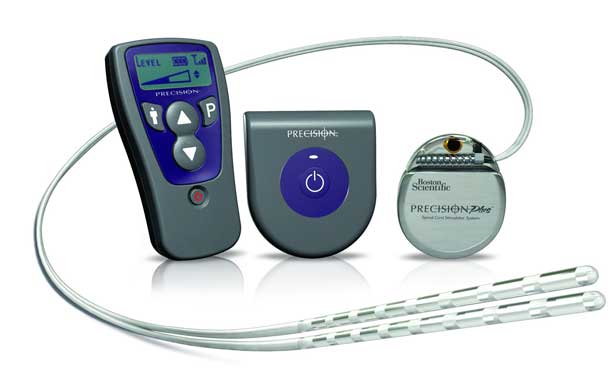Spinal cord stimulation is a minimally invasive procedure that is used to treat chronic pain with a so-called spinal cord stimulator system, also called neurostimulator or neuromodulator. A spinal cord stimulation system is a technical device that is implanted under the skin. It sends electric impulses to the spinal cord. This way it can help to ease or end pain that is chronic and resistant to any therapy. The electric impulses change the way of pain transmission without harming any nerve. Spinal cord stimulation is also often called a pace maker for the nervous system.
Image: spinal cord stimulation system with remote control (Photographs provided courtesy of Boston Scientific (© Boston Scientific 2010 – Do not copy or distribute) – The content of this website is under the sole responsibility of its respective authors and does not represent the opinion of BSC. Access to this site does not imply any responsibility for BSC. Please refer to BSC product DFUs for indications, contra indications, precautions and warnings.)



